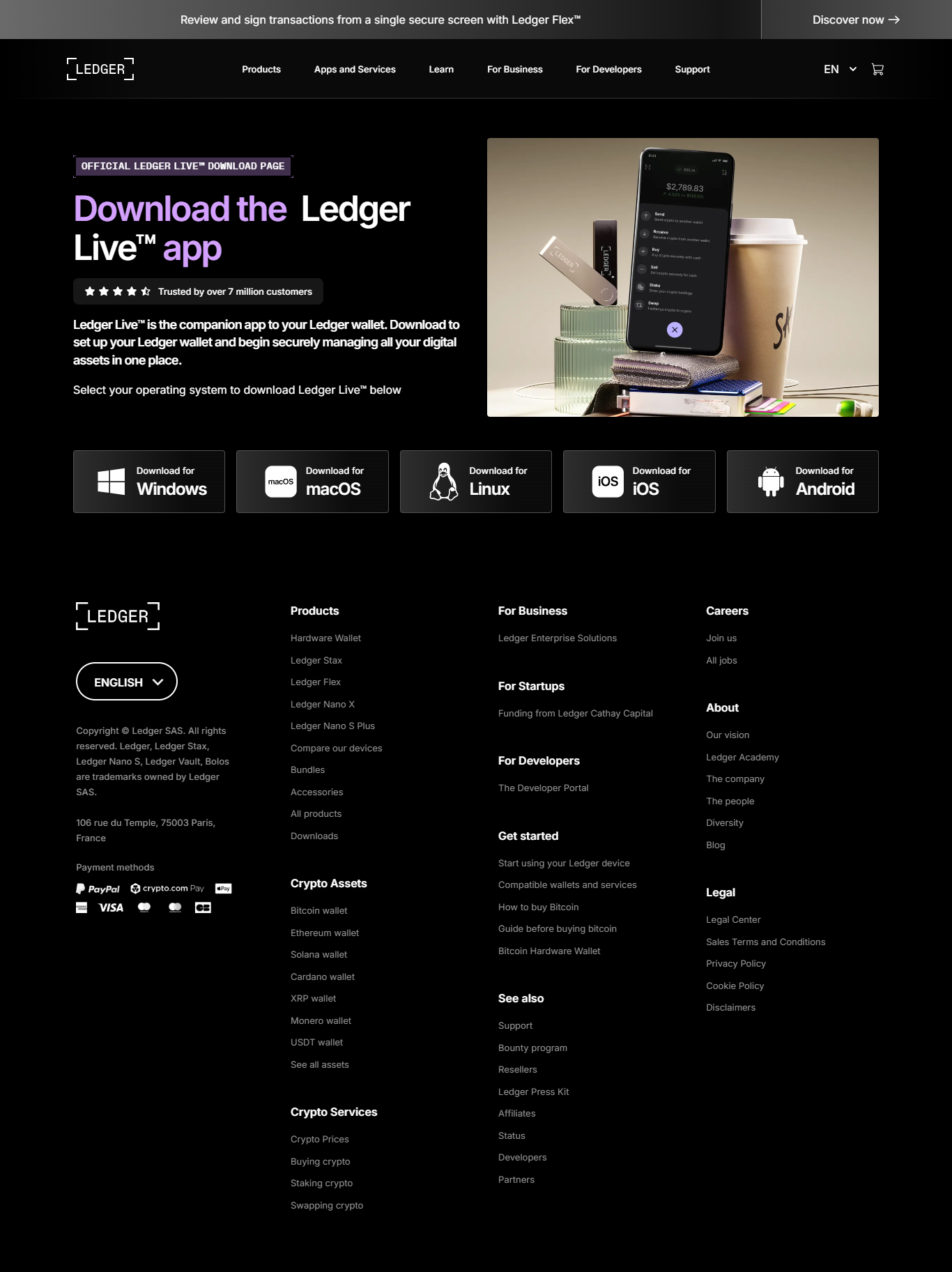Ledger.com/Start – The Complete Beginner’s Guide to Setting Up Your Ledger Wallet
Introduction
If you’re new to cryptocurrency security, Ledger hardware wallets are among the safest ways to store your crypto assets. This guide will walk you through the entire process—from unboxing your Ledger device to making your first secure transaction.
Why Use a Ledger Wallet?
- Cold storage security – Private keys never leave the device.
- Supports 5,500+ cryptocurrencies – Bitcoin, Ethereum, Solana, and more.
- User-friendly interface – Manage assets via Ledger Live.
- Protection against hacks – Immune to online threats.
Let’s get started!
Step 1: Unboxing Your Ledger Device
When you purchase a Ledger Nano S Plus, Nano X, or Stax, your package should include: ✅ Ledger hardware wallet ✅ USB cable (Micro-USB/USB-C, depending on model) ✅ Recovery phrase sheet (Write this down manually—never digitally!) ✅ Getting started guide
⚠️ Warning: Only buy from Ledger’s official website to avoid tampered devices.
Step 2: Setting Up Your Ledger Device
1. Connect Your Ledger to a Computer or Phone
- Use the included USB cable to connect your Ledger to a PC/Mac or mobile device.
- For Nano X, you can also use Bluetooth (for mobile setup).
2. Initialize the Device
- Turn on the device by pressing the side button (Nano X/Stax) or both buttons (Nano S Plus).
- Choose “Set up as new device.”
3. Write Down Your Recovery Phrase (Most Important Step!)
- Your Ledger will generate a 24-word recovery phrase.
- Write it down on paper (never take a photo or store it digitally).
- Confirm the phrase by selecting the words in order.
🔐 Why is this important?
- This phrase is the only way to recover your funds if your Ledger is lost or damaged.
- Never share it with anyone!
4. Set a PIN Code
- Choose a 4-8 digit PIN to lock your device.
- This adds an extra layer of security.
Step 3: Install Ledger Live App
Ledger Live is the official app to manage your crypto.
Download Ledger Live
- Desktop: https://www.ledger.com/ledger-live (Windows/macOS/Linux)
- Mobile: Available on iOS & Android.
Connect Your Ledger to Ledger Live
- Open Ledger Live.
- Select “Get started” → “Ledger device”.
- Follow the prompts to pair your device via USB/Bluetooth.
Step 4: Add Crypto Accounts
Now, you can add supported cryptocurrencies to your wallet.
How to Add a Bitcoin (BTC) Account
- In Ledger Live, go to “Accounts” → “Add account”.
- Select Bitcoin (BTC).
- Confirm on your Ledger device.
- Your BTC address will appear—use this to receive funds.
Repeat for other coins (ETH, SOL, XRP, etc.).
Step 5: Sending & Receiving Crypto
How to Receive Crypto
- Open Ledger Live → Select the crypto account (e.g., Bitcoin).
- Click “Receive” → Verify the address on your Ledger screen.
- Share this address with the sender.
How to Send Crypto
- Go to the crypto account → Click “Send”.
- Enter the recipient’s address (double-check this!).
- Confirm the transaction on your Ledger device.
🔒 Security Tip: Always verify addresses on your Ledger screen to avoid scams.
Step 6: Advanced Security Features
1. Use a Passphrase (25th Word)
- Adds an extra word to your 24-word recovery phrase.
- Only those with both the 24 words + passphrase can access funds.
2. Enable Two-Factor Authentication (2FA)
- Protects your Ledger Live account.
3. Keep Firmware Updated
- Regularly update your Ledger device via Ledger Live for security patches.
Step 7: Troubleshooting Common Issues
1. Ledger Not Connecting to Ledger Live
- Try a different USB cable/port.
- Restart Ledger Live.
- Update firmware.
2. Forgotten PIN Code
- You’ll need your 24-word recovery phrase to reset the device.
3. Lost or Stolen Ledger
- Use your recovery phrase to restore funds on a new device.
Conclusion
Congratulations! You’ve successfully set up your Ledger wallet and can now securely store, send, and receive cryptocurrencies.
Made in Typedream
